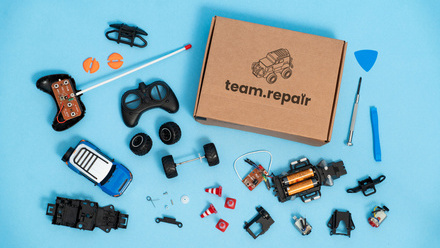Navigating Condition Monitoring Challenges in Hazardous Areas
Condition monitoring is essential for maintaining the safety and efficiency of machinery in hazardous industries, including oil and gas, chemical manufacturing, and mining. These sectors operate under extreme conditions and involve significant risks, where equipment failure can have catastrophic consequences. Implementing condition monitoring solutions in such environments poses unique challenges, yet technological advancements are helping to overcome these obstacles.
CHALLENGES IN CONDITION MONITORING
Many industries operate in environments with extreme temperatures, pressures, humidity, and exposure to corrosive substances. These harsh conditions can quickly degrade monitoring equipment, necessitating frequent maintenance or replacement. For instance, in the oil and gas industry, equipment may need to withstand temperatures ranging from -40 to over 150°C and resist corrosive chemicals such as hydrogen sulphide and chlorides.
The presence of flammable, explosive, or toxic materials in hazardous areas significantly raises safety concerns for personnel and equipment. The risk of ignition or explosion necessitates the use of intrinsically safe equipment that can operate without creating sparks or heat that could trigger an explosion.
Reliable data collection is crucial for predictive maintenance and avoiding unplanned downtime. However, maintaining data integrity in such challenging environments is complex. Data accuracy and reliability in hazardous environments can be compromised by electromagnetic interference, industrial noise, and other factors.
Many hazardous industries also rely on legacy systems that may not be compatible with modern condition monitoring solutions. Integrating new technology with existing infrastructure can be both technically challenging and costly. And ensuring seamless integration without significant downtime or operational disruption is also a major concern.
In addition, equipment in hazardous industries is often situated in remote or hard-to-reach locations, such as deep underground mines or offshore oil platforms. This makes regular monitoring and maintenance difficult, potentially delaying the identification and resolution of issues.
OVERCOMING THE CHALLENGES
Today, advances in materials science have led to the development of sensors that can withstand extreme environmental conditions. For example, sensors made from advanced ceramics or coated with special protective layers can endure high temperatures, pressures and corrosive substances, reducing the frequency of maintenance and ensuring continuous monitoring.
Wireless technology has also been transformative for condition monitoring in hazardous areas. Wireless sensors and IoT devices eliminate the need for extensive cabling, which can be a source of sparks or electrical hazards. These systems can transmit data in real time to centralised monitoring systems, enabling continuous oversight without the need for direct human intervention.
Integrating predictive analytics and artificial intelligence (AI) into condition monitoring systems enhances data accuracy and reliability. These technologies can process vast amounts of data to predict potential failures before they occur, reducing false alarms and ensuring timely maintenance. For example, AI algorithms can analyse vibration patterns in rotating machinery to detect early signs of wear and tear.
Edge computing brings data processing closer to the source of data collection, minimising the impact of industrial noise and electromagnetic interference. This approach ensures faster decisionmaking and more accurate condition assessments, enhancing the reliability of monitoring systems in hazardous environments.
Remote monitoring technologies, including drones, have revolutionised the inspection and maintenance of equipment in inaccessible locations. Drones equipped with sensors can safely navigate hazardous areas, providing real-time data and visual inspections without exposing personnel to risks. This is particularly useful in offshore oil rigs and deep mines.
DRIVING INNOVATION
The ATEX directive (Atmosphères Explosibles), which applies in the European Union and some other regions, and the globally recognised IECEx (International Electrotechnical Commission System for Certification to Standards Relating to Equipment for Use in Explosive Atmospheres) standard, set out the essential health and safety requirements and conformity assessment procedures for equipment intended for use in explosive atmospheres.
Both schemes mandate stringent safety requirements for equipment used in explosive atmospheres, and equipment used in defined hazardous areas must undergo rigorous testing and certification processes. They both also provide detailed guidelines on the design and installation of equipment in explosive atmospheres.
Technological innovations, driven by the need for ATEX and IECEx compliance, have enhanced the safety of condition monitoring systems by incorporating protective measures such as intrinsic safety (IS) and explosion-proof (Ex) designs.
Manufacturers of condition monitoring equipment have made significant strides in adapting their solutions to ensure safety in hazardous areas and potentially explosive atmospheres.
Intrinsically safe equipment is designed to prevent sparks and limit electrical and thermal energy to levels that cannot cause ignition. This involves using low-energy electronics, isolating circuits, and implementing energy-limiting barriers.
Explosion-proof enclosures are designed to contain any explosion that may occur within the device, preventing it from igniting the surrounding atmosphere. These enclosures are typically made from robust materials like stainless steel and are tested to withstand internal explosions.
To reduce the risk of ignition, manufacturers use non-sparking materials for components that may come into contact with explosive atmospheres. These materials are chosen for their ability to minimise friction and static electricity generation.
Sealed enclosures and hermetic sealing techniques are used to protect sensitive electronic components from exposure to hazardous environments. This prevents corrosive gases and liquids from damaging the equipment and ensures long-term reliability.
Modern condition monitoring equipment also incorporates advanced sensing technologies that are more resistant to harsh conditions. This includes the use of fibre optics for temperature and pressure monitoring, which are immune to electromagnetic interference and can operate reliably in extreme conditions. In addition, sensors are being made from advanced ceramics or coated with special protective layers so they can endure high temperatures, pressures, and corrosive substances, reducing the frequency of maintenance and ensuring continuous monitoring.
Redundant systems and fail-safe mechanisms are also incorporated to ensure that the failure of one component does not compromise the overall safety and functionality of the monitoring system. This includes dual sensors, backup power supplies, and automated shutdown protocols.
Finally, real-time monitoring and remote diagnostics allow for continuous oversight of equipment conditions without the need for personnel to enter hazardous areas. This reduces the risk of exposure and enables quick response to potential issues.
SUMMARY
Deploying condition monitoring solutions in hazardous industries is fraught with challenges, from harsh environmental conditions to safety concerns and data reliability issues. However, technological advancements are continuously overcoming these hurdles. Robust sensors, wireless systems, predictive analytics, edge computing, remote monitoring, and interoperability standards are transforming condition monitoring into a more reliable and safer practice. Moreover, regulatory directives and standards ensure these systems meet the highest safety standards, fostering innovation and enhancing safety protocols. As technology evolves, hazardous industries can expect even more sophisticated solutions, improving both safety and operational efficiency. By embracing these innovations and adhering to stringent regulatory standards, industries can ensure the longevity and reliability of their critical machinery, ultimately safeguarding their operations and personnel.







